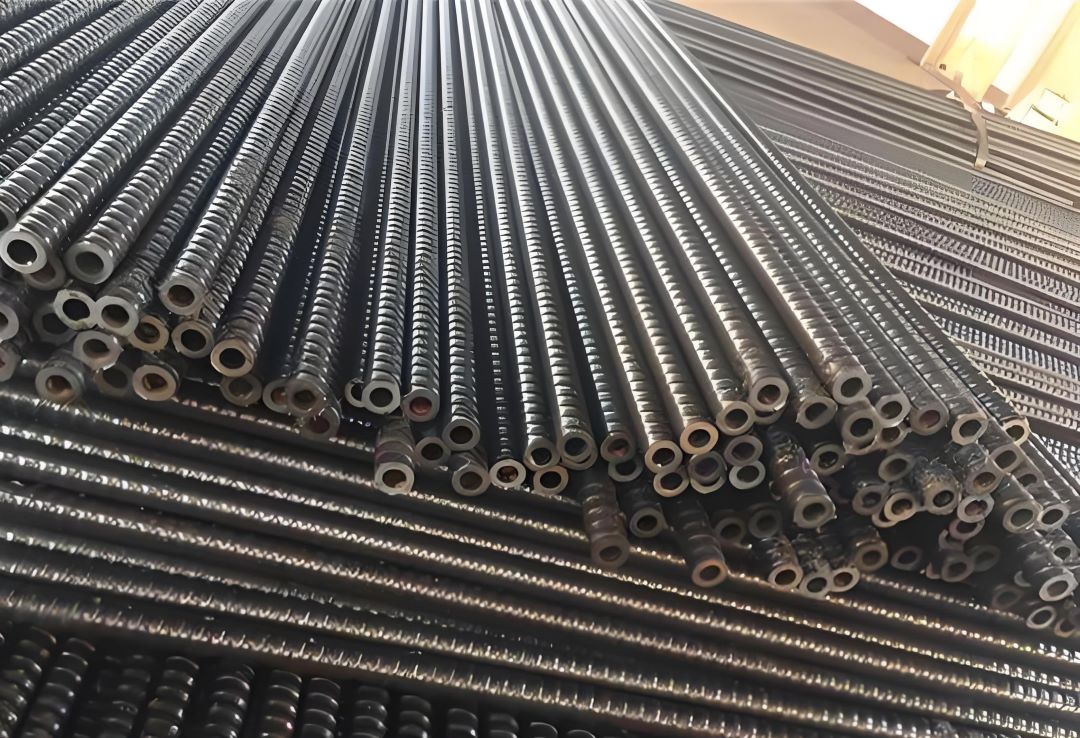What is a hollow anchor? A hollow anchor is a rod-shaped rock and soil anchoring component with a hollow channel inside. It consists of a hollow rod, anchor head, grouting plug, backing plate, and nut. Its core feature is the integration of drilling, grouting, and anchoring: the rod serves as both a load-bearing structure and a grouting channel, achieving a "drilling, anchoring, and grouting" system.

Key Component Functions
① Hollow Rod: Threaded throughout, it also functions as a grouting pipe, allowing grout to penetrate into rock fractures through the central channel of the rod.
② Anchor Head: Contains a drill bit (self-drilling) or an expansion device (prestressed), used to stabilize the hole wall and transfer loads.
③ Grouting plug and backing plate: They seal the grouting space, ensuring full pressure grouting and concentrating the transfer of surrounding rock stress.
I. Main Application Scenarios
1. Slope and Foundation Pit Support
① Slope Reinforcement: Anchors are formed by grouting holes through inclined drilling, preventing landslides through frictional resistance.
② Foundation Pit Support: Bonds are formed in weak soil layers to restrain soil deformation.
2. Tunnels and Underground Engineering
① Radial Support: Rapidly establishes initial support in hard rock or areas with developed fractures to control surrounding rock deformation.
② Advanced Support: Self-drilling pipe sheds replace traditional pipe sheds to address Grade IV/V surrounding rock collapse.
3. Special Engineering Scenarios
① Micropile Foundation: Used in wind turbine tower foundations and bridge pile foundations, grouting creates a composite foundation.
② Disaster Management: Repairs sinking foundations or deformed slopes, grouting to fill fractures and block groundwater.
II. Key Differences from Traditional Anchor Bolts
1. Grouting Effect: Hollow anchor bolts achieve full grouting with pressure injection, allowing grout to penetrate cracks. Traditional mortar anchor bolts are prone to grouting and face difficulties in ensuring full grouting.
2. Construction Efficiency: Hollow anchor bolts achieve simultaneous drilling and grouting, eliminating the need for pipe removal. Traditional mortar anchor bolts require pipe removal before reinserting the bolt.
3. Corrosion Resistance: Hollow anchor bolts have mortar covering the entire length of the bolt. Traditional mortar anchor bolts have partially exposed bolts.
4. Geological Adaptability: Hollow anchor bolts are suitable for both fractured and water-rich formations. Traditional mortar anchor bolts face a high risk of failure in formations prone to collapse.
Through structural innovation and process integration, hollow anchor bolts address anchoring challenges in complex geological conditions and have become a pillar of modern geotechnical engineering. With the promotion of intelligent construction equipment and high-performance materials, their application will further expand to cutting-edge fields such as deep-sea engineering and offshore infrastructure. For more technical details, please refer to industry literature.





